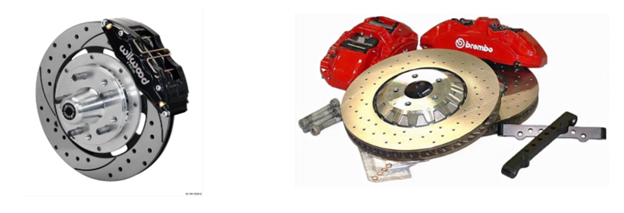Sign up now to join the JEGS email newsletter and be the first to learn about new products, special deals and e-mail only offers!

Like most car repair or maintenance items, brake fluid has many options. Searching through in-person and online products can be overwhelming and overwhelming to determine which brake fluid is the best for your needs.
If you’ve ever asked yourself, “What brake fluid do I need?” then we’ve set up a guide for what to do. Below, we outline why braking fluid is crucial and the different types of brake fluid to consider.
Brake fluid is essential to the operation of your brakes. Without it, your braking system cannot function. Your braking system depends on pressure, and braking fluid ensures that the necessary force reaches your front and rear wheels. Ultimately, it ensures that the press of your foot alone can engage the brakes and stop your vehicle.
Pressing your car’s brake forces the master cylinder in your vehicle to pressurize the brake fluid. The liquid then enters your car’s brake lines. The next stop is the brake caliper for the wheels in the front and back of the vehicle. There, the brake fluid pushes against the pistons, which engage the brake pads to apply force to the brake rotor, slowing the wheel to a stop.
Without braking fluid, your brakes won’t be as sharp and might not even stop when needed.
There are different types of brake fluid, and their categorization depends on their composition and water absorption. The U.S. Department of Transportation has created four categories for brake fluids: DOT 3, DOT 4, DOT 5.1, and DOT 5. The first three categories are likely the most commonly used. The first three fluids are hygroscopic, meaning they absorb moisture to prevent corrosion from the inside out. DOT 5 does not do this since it is silicone-based.
There are differences within the broader categories, primarily related to composition. For example, DOT 3 and DOT 4 fluids are glycol-based. Note that certain cars and braking systems only use specific types of fluid, so consult your vehicle's owner's manual to confirm the correct DOT rating..
DOT 3 is the most widely used brake fluid. Over time, the solution can degrade, dropping the boiling point to a little under 300 degrees Fahrenheit. However, when newly added, the fluid has a boiling point of around 400 Fahrenheit. It typically takes in less water than DOT 4 fluid, meaning you may not have to change it as much as its counterpart. Nevertheless, DOT 3’s lower boiling point can increase the likelihood of the fluid boiling when a car does more arduous tasks like driving over hills or speeding.
Alternatively, DOT 4 fluid boils around 450 Fahrenheit and is typically used in European cars but can also be used in some domestic vehicles. Over time, that boiling point can drop to around 300 degrees Fahrenheit. It also has a lower viscosity, or thickness, than DOT 3.
DOT 5.1 has a high boiling point, around 500 Fahrenheit. Because of this, it is typically used in vehicles that perform heavier tasks or are used for racing.
DOT 5 brake fluid is the lease common type in use. However, it's important to understand that it is not compatible with the other brake fluids (DOT 3, 4, and 5.1), so don't use it in place of them. Also, if it is required for your vehicle, you must only use DOT 5.
It’s crucial to consult your vehicle’s owner’s manual before purchasing brake fluid. It should offer guidance regarding which brake fluids to buy.
Sign up now to join the JEGS email newsletter and be the first to learn about new products, special deals and e-mail only offers!

Using the wrong brake fluid can cause damage to your brakes. So, it’s crucial to know which type of brake fluid to use. There are two ways to identify whether DOT 3, DOT 5.1, or DOT 4 fluid works best for your vehicle. The simplest way to check to see what brake fluid to use is by pulling out your owner’s manual. If you cannot locate your vehicle’s owner’s manual, many automakers include them online to download.
You can also check the top of the master cylinder is a cap. The type of brake fluid your car takes will be listed on it.
Your braking system needs the correct brake fluid to work effectively, so consult these items before purchasing and using a brake fluid product.
Considering how critical brake fluid is to the running of your vehicle, it makes perfect sense to ask, “Does brake fluid go bad?” Brake fluid can go bad and should be changed as a routine part of your vehicle’s maintenance.
Your owner’s manual or an expert technician can offer guidance on how often you need to replace your brake fluid.
Here are some reasons why brake fluid can lose its potency:
If your brake fluid isn’t operating correctly, it can lead to significant issues with your braking system, including your brakes not working. One of the easiest ways to confirm if it is in need of being flushed is to look at the fluid in the reservoir. Clean and fresh brake fluid will have a clear tan color to it. As it ages and is used, it will brown and become cloudy. This is when it should be replaced; in most cases, every two years or 30,000-40,000 miles.
Here are a few ways to tell if your brake fluid is low:
If you’re searching for braking fluid, check out what we have in our inventory at JEGS. We can help you locate the best brake fluid for your vehicle.



